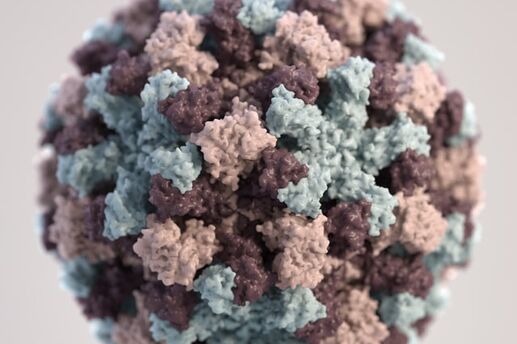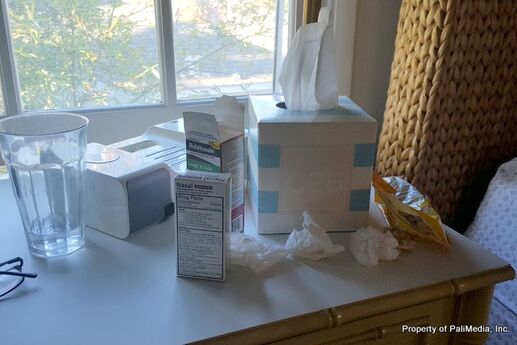Far too many of us treat our cars like second homes: We eat, drink, spill things and create piles of clutter inside.
But stop and think about it. When was the last time you really gave your car a thorough cleaning on the inside? And think back to the last time you hopped into your car with a bad cold and sneezed, spreading germs throughout your car's cabin. Did you bother to wipe down surfaces afterwards? Didn't think so.
Germs run rampant all around us, including in our automobiles. Fortunately, there's much you can do to keep those pesky little microbes in check. Here are some tips from the country's leading germ experts on how to sanitize your ride's interior.
Daily Wipe-down
When you and your kids get in your car, you inevitably come into contact with surfaces that are covered with germs," says Donna Duberg, assistant professor of clinical laboratory science at Saint Louis University's Doisy College of Health Sciences."Then you touch your eyes, nose and mouth. That's how little germies from unclean surfaces make their way into our bodies."
Stay healthy by wiping down the frequently touched areas with a disinfectant (e.g., a sanitizing or disinfecting wipe) that kills viruses and bacteria. (You may have to read the fine print on the label to be sure.) Look for a wipe that does not contain bleach -- some are labeled as being "bleach-free" -- so you can use them to clean hard, nonporous surfaces like steering wheels, dashboards, knobs, chrome accents, door handles and even mirrors.
Make wiping down the interior of your vehicle part of a daily routine, especially when someone in your family has been sick.
Sneeze on Wheels
We are becoming a nation of families eating on the go -- most often in our cars. Inevitably, food particles end up on the vehicle's upholstery, floor, seat belts, steering wheel and knobs. These crumbs are a breeding ground for bacteria, which love a warm, dark and moist environment.
What's more, during allergy season you're also likely tracking irritating outdoor allergens into your car, exacerbating those sniffles and sneezes.
Vacuum what you can with a handheld portable vac after returning home from any outing during which you or the kids were eating in the car. "Then wipe down surfaces with a disinfectant wipe and dry them completely to eliminate any lingering moisture," says Philip Tierno, M.D., Ph.D., director of clinical microbiology and immunology at New York University Langone Medical Center and the author of The Secret Life of Germs: Observations and Lessons From a Microbe Hunter. "Failing to do so allows organisms like mold to grow, which can make you and your children sick," warns Tierno.
And even if your family doesn't eat in the car, make a regular habit of vacuuming the floor and seats to pick up pollen and other sneeze-inducers you might have inadvertently welcomed into your car.
Sanitizer at the Ready
Once you get into the habit of wiping surfaces and vacuuming food spills in your car, why not attack germs' main entry point into your car: your hands?
Hand sanitizers should be kept in every single vehicle, advises Duberg. After you use the handle at the gas pump or press the buttons on the ATM, your hands are covered with germs from the people who touched these surfaces before you.
After touching commonly used surfaces, apply a hand sanitizer to avoid passing germs onto the surfaces inside your car. Go with sanitizers that contain at least 60 percent alcohol concentration. Look at the list of active ingredients for ethyl alcohol, ethanol, isopropanol or another variation. Apply to all parts of the hands (i.e., palms, nails, knuckles) and continue to rub your hands together until they are completely dry.
Car Seat Care
Little ones can equal big messes in the car -- bottle spills, leaky diapers, unidentifiable crumbs. Luckily, the majority of child safety seats are made from fabric that can be removed and washed. A recent study conducted by Charles P. Gerba, Ph.D., professor of environmental microbiology at the University of Arizona and a leading authority on germs, found that car seats often have bacteria on them -- and enough to make a child sick with an ear infection or strep throat.
And that's not all. They also typically have some mold growth, which can be particularly worrisome if you or your child suffers from allergies or asthma. Gerba suggests washing your child safety seat cover a few times per month.
He also recommends wiping down the plastic shell and harness of the child safety seat with water and a mild soap on a weekly basis -- or more often if your child is sick. Between washings, be sure to vacuum or shake out the car seat as often as possible to remove food droppings.
Photo by Oliur on Unsplash
Like this article? Get more by following us on Facebook at Beauty & Confidence.






